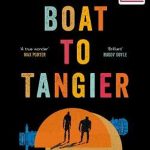News & Reviews
In conversation with John Zubrzycki
In conversation with Bookoccino co-owner and former New York Times foreign correspondent and author Ray Bonner, John Zubrzycki discusses his life and work in India as a foreign correspondent, diplomat and author. His widely acclaimed books – Empire of Enchantment: The Story of Indian Magic, The Last Nizam: An Indian Prince in the Australian Outback and The Mysterious Mr Jacob: Diamond Merchant, Magician and Spy, set the scene through which John talks about his deep fondness for this kaleidoscopic country.
You’ve been in India as a diplomat, journalist, author. That is a compelling and perhaps unique career. What is it about India that lured you and has kept you coming back?
Some of my earliest memories are of the Taj Mahal shrouded in a dust storm when my parents took me there in the sixties. I must have been five or six years old. They bought a few knickknacks and these fascinated me too. Before uni I did the famous overland trip from Indonesia through to Turkey and the couple of months I spent in India were an eye-opener. I was captivated by the chaos and the colour but I was also fascinated by the history and culture. I fell in love with Hindu and Muslim architecture and nothing gave me more pleasure than stumbling through ruins, scrambling up forts, wandering through the bazaars. My philosophy of travel has always been to stay off the beaten track and Indian offered a myriad of opportunities to do that. I decided to study Indian history and Hindi at university and feel like I’ve been a student ever since.
What is it in India that inspires, infuses your writing?
No other country offers the wealth of undiscovered stories as India does. When I was working there as a foreign correspondent there was no such thing as a slow news day—and everything tended to happen on a monumental scale. The more I explored, the more people I met, the more extraordinary stories I came across. My inspiration came from the excitement of uncovering these forgotten histories, these amazing characters whose lives staggered the imagination such as Mukarram Jah, the last
Nizam of Hyderabad who inherited what was probably the largest fortune in the world and then went to Australia to drive bulldozers through the desert. I like to take readers along my journey of discovery when I write, introduce them to the peoples and places so they can share the excitement. In India you always have to be prepared for the unexpected. I can be researching the history of the royal family of Jaipur in the state archives in Bikaner and stumble across a completely untold story relating to the Raj that I file away in the never-ending list of topics I would one day love to follow up. India is also incredibly accessible. The people are open and welcoming and if you demonstrate an interest in their country and culture they are only too happy to share their stories.
Do you have a favourite place?
I always get asked this and it’s one of the hardest questions to answer. When it comes to cities, I’m always torn between picking between Calcutta and Bombay. Calcutta or Kolkata as it is known today, has so much history because it was the imperial capital and a kind of crumbling grandeur you just don’t see anywhere else. Bombay, which most people who live there prefer to call it rather than Mumbai, has that history also but what sets it apart is its location by the sea, its cosmopolitan nature and the energy that derives from it being the financial capital as well as Bollywood of course. I also love the northeastern states, again for the sheer variety of cultural groups and often spectacular landscapes. The same goes for states like Madhya Pradesh with its fantastic wildlife parks and tribal cultures or Rajasthan for the sheer romance of its fabulous forts and palaces.
Which of your professions, or careers, most influences how you introduce others to India?
I approach writing history and biography in the same way as I approach journalism—making stories interesting and accessible. So I guess both careers influence how I introduce India to others. You’re not going to get to know a country without interacting with the people and hearing their stories. Most travellers just skim the surface of a country like India. It can be overwhelming because there’s so much to take in. I like to make them feel like they are accompanying me on a journey of real discovery. I like to introduce them to people, places and experiences that I know from having visited India so many times are going to be unique and rewarding.
What would do you most hope travellers come away with after their time with you, what feelings about India’s literature and landscape, what sense of the people and their culture?
I hope that they come away with the urge to return. I hope they come away having shed some of the stereotypes that are associated with India such as poverty and overcrowded cities. India has that, but it has much more as well. No other country offers the wealth of undiscovered stories and undiscovered places as India does. India is a cornucopia of countries rolled into one, each with their own distinctive cultures, histories and landscapes. I definitely want people to get a sense of this and whet their appetites for more. That’s why the tours I take are designed to maximise people’s immersion in the country without being overwhelming. I want people to appreciate what India has to offer across as wide a variety of areas as possible whether it’s Hindu temple architecture, remnants of the British Raj, the lives of the flower sellers of
Mulik ghat in Kolkata, the contribution of Jewish traders to the commercial evolution of Mumbai, the lives of the royal families of Rajasthan—behind all these things are incredible stories that I love to share.
Talk a little about the trip you will host next January?
It’s designed as an author’s tour and that means that people get a behind the scenes look at what went into writing my books. So I take people through the Calcutta of the late 19th century diamond merchant Alexander Malcolm Jacob. I explore the Kipling angle to that story by visiting the Jawai Leopard Sanctuary, the kind of place that you would find in the Jungle Book. I’ll be introducing participants to some of the magicians I worked with when researching Empire of Enchantment. We’ll visit the palaces of Hyderabad that were the setting for The Last Nizam. In Jaipur, the setting for my next book, we’ll explore
the city’s royal heritage. One of the highlights of the trip will be attending the Jaipur Literature Festival. It will be my sixth time at what is rightly described as the greatest literary event in the world for the sheer range of writers who attend and the incredible atmosphere that the thousands of attendees bring with them. There will be plenty of opportunities to meet writers as well as attending the sessions and evening entertainments. As well as the festival there will be side trips to private jewellery showrooms, the City Palace and the Amber Fort.
Anything else you’d like to add?
I’ve been working with Lucia O’Connell of Nomads Secrets to curate a tour that will give even people who have been to India before a series of unique experiences. No other tour I’ve been involved with has such an attention to detail. The accommodation is superb, almost exclusively Taj Group properties including the fabulous Rambagh Palace in Jaipur and the Falaknuma in Hyderabad—two of the most luxurious hotels in India as well as the iconic Lake Palace in Udaipur. We’re not rushing people. India takes time and patience, but the rewards are immense. Whether this is your first trip to India or your tenth, it will be an unforgettable experience.
John Zubrzycki is hosting a specially curated 19-day luxury journey across the Subcontinent starting on January 19th.
This Literary Tour includes VIP access to the 2020 Jaipur Literature Festival.
For the full itinerary go to https://nomadssecrets.com/literarytours


